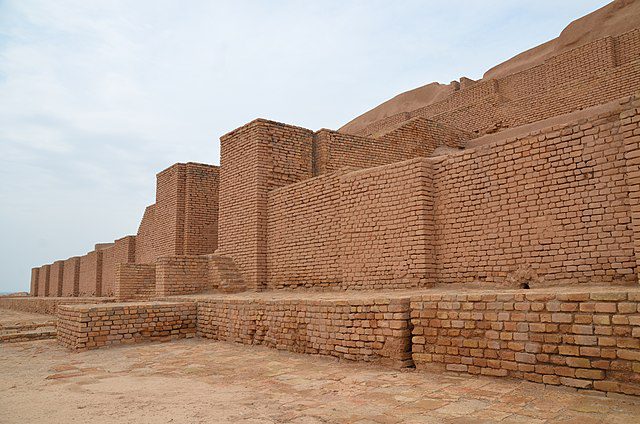Table of Contents
Long before the Persian Empire rose to prominence, another ancient civilization thrived in what is now Iran. The Elamites, who emerged around 8000 years ago, created a unique culture in the rugged landscapes of southwestern Iran. Unlike later Iranian and Semitic peoples, the Elamites had their own language and cultural identity.
Located between the towering Zagros mountains and the fertile plains of Khuzestan, the Elamites established their main centers in Anshan and Susa. Despite their mysterious origins and language, their influence on the region endured long after their decline, shaping the course of history.
Though the Elamites’ racial heritage remains unclear, their impact on the Persian Empire was profound. The territories they once inhabited became vital to Iranian dominance, with their culture leaving an indelible mark on Persian society. From the ruins of Susa to the artifacts unearthed from their ancient cities, the Elamites’ legacy speaks to their lasting significance in shaping Iran’s history.
Proto-Elamite Period
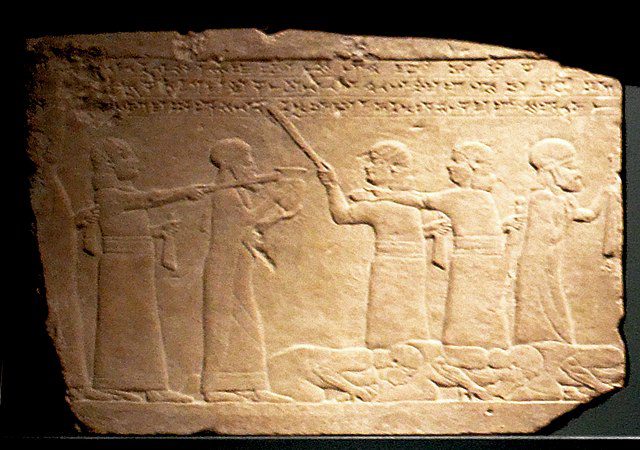
In ancient times, a lively civilization thrived in what we now call southwest Iran, dating back to about 4000 BC. Susa, nestled on flat lands, and Anshan, nestled among mountains, were its main centers. Susa’s beginnings go back to around 4200 BC, while signs of Sumerian influence, like pottery, show up around 3200 BC.
In Luristan, people were already making things out of bronze. By 3000 BC, the Elamite language started being written down, telling stories of the past using cuneiform symbols. This marked the start of an exciting period in human history, full of new ideas, journeys, and the enduring strength of a civilization on the rise.
Old Elamite Period
Around 2700 BCE, the Old Elamite period began, marked by clashes with neighboring Mesopotamian cities like Ur. The Awan dynasty followed, bringing both internal unity and diplomatic ties, with the 11th ruler even striking a deal with Naram-Sin of Akkad.
But then came the Simash dynasty, possibly hailing from the mountains of southern Luristan, shaking up Elam construction political scene. Despite early successes, Elam faced a setback when Shulgi of the 3rd Ur dynasty nearly conquered them. Yet, Elam’s spirit endured, leading to a successful rebellion against Ur’s rule, a story that echoed in Mesopotamian songs and texts.
Amidst these power struggles, the Eparti dynasty rose to prominence in the mid-19th century BCE, led by the formidable Shirukdukh. Their military campaigns against Babylon’s rising star, Hammurabi, showcased the complexities of ancient geopolitics.
Middle Elamite Period
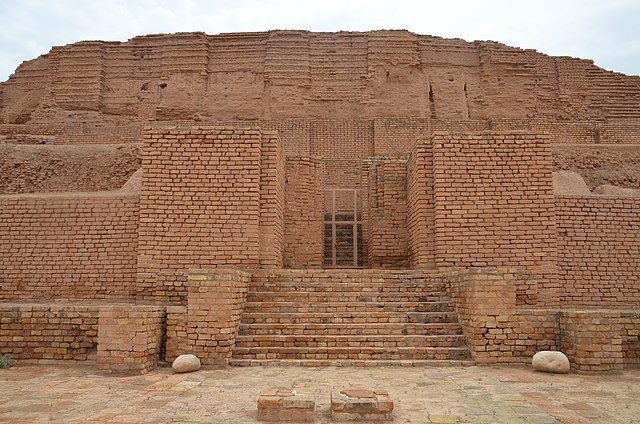
The Middle Elamite era began with the Anzanite dynasty taking charge after a long period of silence in historical records. Khumbannumena, the fourth ruler in this line, led a remarkable expansion of Elam’s territory, earning him the title “Expander of the Empire.” His son, Untash-Gal, made his mark by founding the city of Dur Untash, known today as Chogha Zanbil. However, as Elam grew stronger, conflicts with the rising Assyrian power became more frequent.
In the years that followed, Elam found itself increasingly at odds with the mighty Assyrian empire. Tukulti-Ninurta I’s invasions into Elam’s northern mountains prompted retaliatory strikes by Kidin-Khutran, Khumbannumena’s successor. Despite initial victories, Elam eventually succumbed to Assyrian dominance. Tukulti-Ninurta’s brief expansion southward briefly overshadowed Elam’s strength, marking the gradual decline of the Anzanite dynasty.
After a period of turmoil, the Middle Elamite period witnessed a resurgence under Shutruk-Nahhunte around 1160 BCE. This marked the beginning of a new dynasty, likely based in Susa. Elam emerged as a formidable military power in the Middle East, taking advantage of internal conflicts within Assyria. Shutruk-Nahhunte’s bold capture of Babylon, along with the famous Hammurabi’s law code, highlighted Elam’s ascendancy. However, subsequent reigns saw both successes and setbacks, with Elam’s control extending deep into Mesopotamia but facing resistance from Babylonian forces.
The period’s shift towards centralized authority in Susa hinted at internal struggles to come, reflecting the complex balance between power dynamics and regional autonomy during this transformative period in Elamite history.
Chogha Zanbil
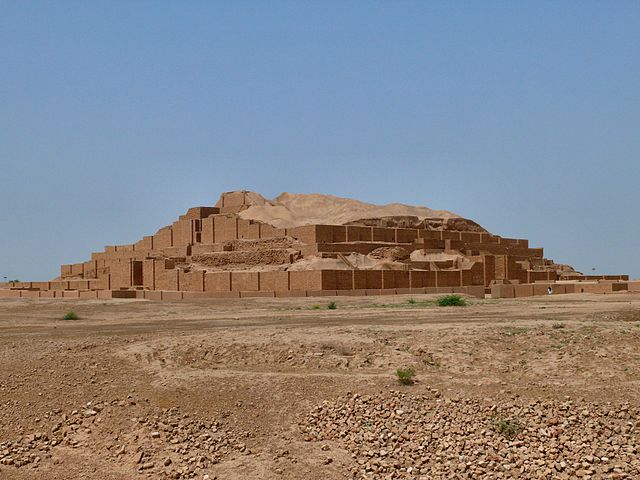
Located in the ancient lands of Mesopotamia, Chogha Zanbil, or Dur Untash, stands tall as a marvel of the past. Built during the reign of King Untash Naparisha when the Elamite empire flourished, this sacred city boasts three sturdy walls enfolding a grand temple – a towering ziggurat that reaches skyward with reverence.
At the heart of Chogha Zanbil lies the ziggurat, a colossal square structure stretching 105 meters on each side. This majestic monument was erected to honor Inshushinak, the chief deity of the Elamites. Despite the passage of time, the vibrant red bricks of the ziggurat retain their youthful hue, whispering tales of ancient splendor.
Amidst the maze of ruins, remnants of palaces and smaller temples stand as a testament to the diverse religious practices once thriving within these sacred precincts. With over 5000 inscriptions etched into its bricks, Chogha Zanbil echoes the devotion and craftsmanship of its creators, ensuring their legacy perseveres through the ages.
Neo-Elamite Period
Elam construction faced tough times during the transition from the Middle to the Neo-Elamite times. In 742 BCE, Huban-nugash became king, but his rule saw the kingdom split into smaller parts, weakening its central power.
Over the next 100 years, Elam tried to interfere in Mesopotamian affairs, often teaming up with Babylon against the powerful Neo-Assyrians. Despite occasional successes, Elam struggled against Assyrian expansion. Internal conflicts, along with meddling from Assyria and Babylon, worsened the situation. As Assyrian armies invaded Elam, especially in Luristan, the kingdom’s unity crumbled. Finally, Ashurbanipal’s campaigns from 692 to 639 BCE devastated Susa, Elam’s capital, leaving it in ruins and its lands barren.
Anshan: A Center of Elamite Power
Set against the rugged landscapes of ancient Elam, Anshan stands as a symbol of a distant era’s enduring influence. Located north of modern-day Shīrāz in southwestern Iran, this ancient city spans 350 acres of historical significance. Within its ruins lie treasures revealing the early roots of civilization, including precious artifacts showcasing the birth of Elamite writing.
Anshan rose to prominence around 2350 BC as a formidable rival to the Mesopotamian Akkadian dynasty. Its golden age, however, occurred during the 13th and 12th centuries BC, when Elamite rulers, known as the “kings of Anshan and Susa,” regularly raided Babylonian cities. By 675 BC, control over the region shifted to the Achaemenian Persians, who held the title “kings of Anshan” until the reign of Darius I in 522 BC.
Exploring the Elamite Empire Today
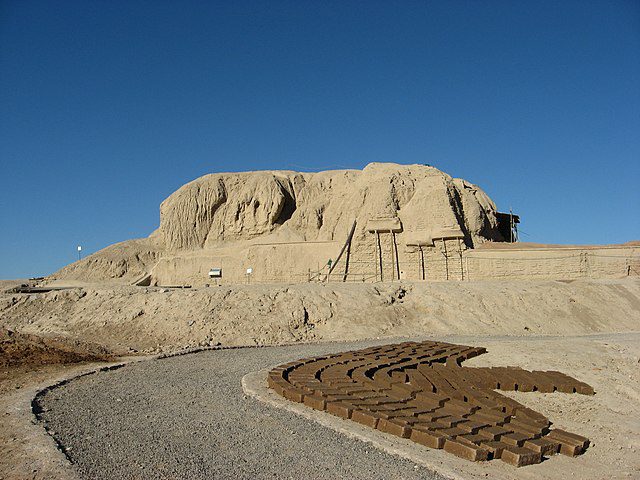
Exploring the ancient Elamites’ world reveals a rich history mainly centered around their capital Susa and nearby places in Khuzistan. However, there are intriguing connections to Elamite culture in other areas.
Tepe Sialk
One such mystery lies near Kashan at Tepe Sialk, a mound with ancient secrets. Archaeologists have found human remains dating back to 3,500 BC, suggesting the presence of an ancient civilization. Some believe Tepe Sialk might have been a sacred place, perhaps even holding a tall structure called a ziggurat, showcasing the Elamites’ spiritual and building skills.
Jiroft
Further east, Jiroft stands out as a bustling center for trade and business on ancient routes. Here, different cultures meet, showing how Elamite influence reached beyond Susa. In Jiroft’s lively streets and markets, we can still sense the Elamite legacy, proving their lasting impact on the ancient world’s connected network of trade and interaction.
FAQs about the Elamite Empire
Q1: What were the Elamites known for?
A1: The old society of Elam, which was in what we now call Iran, was famous for its fancy artwork. They also set up a way of life that lasted for thousands of years and had a big impact on later empires like Babylon and Medo-Persia.
Q2: Were the Elamites Persians?
A2: The Elamites were different from both Iranians and Semitic people. They had their own language, which wasn’t like the languages spoken by later Iranian groups or any other known language. It was so different from Akkadian, a language of the time, that it’s compared to how different Chinese is from English.
Q3: What happened to Elamite?
A3: After trying to attack Babylon in 655 BC and failing, Elamite strength started to weaken. In the Battle of Ulai in the Susa plain, an Assyrian army attacked Elamite defenses. The Elamites were thoroughly defeated, and their king, Teumman, was beheaded during the battle.
Q4: Who are the descendants of the Elamites?
A4: Elam was a small area in the southwest of what is now Iran. Some Arabs from Khuzestan today might be related to the ancient Elamites.
Q5: Who destroyed the Elamites?
A5: When Elam attempted to rebel against Assyria, Ashurbanipal defeated them. He said he personally killed the Elamite king and his son with his own sword, but in truth, he wasn’t even at the battle; he was safe in his palace.
Last Words: Experience the Best of the Elamite Empire with a Customized Tour
The Elamites, who appeared about 8000 years ago, lived in what’s now Iran. They had their own language and culture, different from later Iranian and Semitic peoples. They settled in places like Anshan and Susa, and even though we’re not sure where they came from, they had a big impact on the region’s history, lasting long after they disappeared.
If you’re keen on discovering the ancient wonders of the Elamite Empire, a trip to Iran is a must. In Iran, you’ll find traces of ancient civilizations everywhere, from impressive structures like Chogha Zanbil to stunning carvings at Persepolis. With customized tours, you can explore these places at your own pace, led by guides who really know their stuff.
With To Iran Tour, you’re not just another tourist—you’re our special guest. We’re here to ensure your trip to Iran is unforgettable, filled with incredible memories and fascinating discoveries. So, if you’re ready to uncover the secrets of the Elamite Empire, let’s do it together. Choose To Iran Tour for an adventure you’ll cherish forever.

